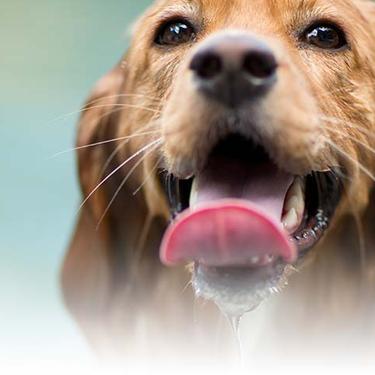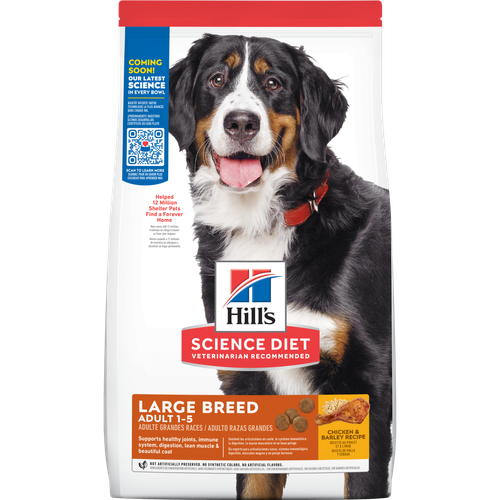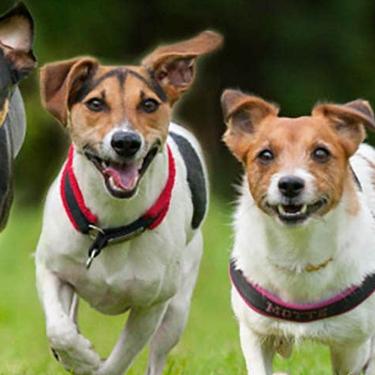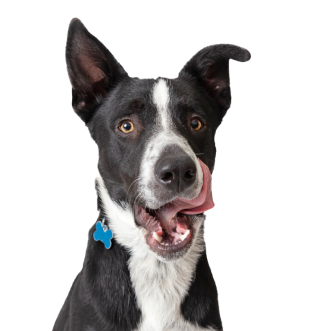
-
Find the right food for your petTake this quiz to see which food may be the best for your furry friend.Find the right food for your petTake this quiz to see which food may be the best for your furry friend.Featured products
 Puppy Large Breed Chicken & Brown Rice Recipe
Puppy Large Breed Chicken & Brown Rice RecipeVital nutrients to support 5 essential building blocks for lifelong health
Shop Now Adult Chicken & Barley Recipe Dog Food
Adult Chicken & Barley Recipe Dog FoodSupports lean muscle and beautiful coat for adult dogs
Shop Now Puppy Sensitive Stomach & Skin Salmon & Brown Rice Recipe
Puppy Sensitive Stomach & Skin Salmon & Brown Rice RecipeDelicious, highly digestible recipe, gentle on stomachs. Nourishes skin & promotes a lustrous coat
Shop NowFeatured products Adult 7+ Chicken Recipe Cat Food
Adult 7+ Chicken Recipe Cat FoodSupports energy level and beautiful fur in mature cats
Shop Now Kitten Chicken Recipe
Kitten Chicken RecipeVital nutrients to support 5 essential building blocks for lifelong health
Shop Now Adult Urinary Hairball Control Chicken & Rice Recipe Cat Food
Adult Urinary Hairball Control Chicken & Rice Recipe Cat FoodActively supports the health of the whole urinary system
Shop Now -
Dog
- Dog Tips & Articles
-
Health Category
- Weight
- Food & Environmental Sensitivities
- Urinary
- Digestive
- Joint
- Kidney
-
Life Stage
- Puppy Nutrition
- Adult Nutrition
- Senior Nutrition
Cat- Cat Tips & Articles
-
Health Category
- Weight
- Skin & Food Sensitivities
- Urinary
- Digestive
- Kidney
-
Life Stage
- Kitten Nutrition
- Adult Nutrition
Featured articles Pet Food Storage Tips
Pet Food Storage TipsDiscover how and where to store your dry, as well as canned, dog and cat food. Learn how to find the "best before" dates on all Hill's pet food packaging.
Read More The Incredible Science Behind Your Pet's Microbiome
The Incredible Science Behind Your Pet's MicrobiomeLearn what a pet's microbiome is, how it contributes to your pet's gut & overall health, and why nutrition is important in maintaining healthy microbiomes.
Read More Water
WaterDiscover why water is the most important nutrient for your dog or cat to live a healthy life. Find out how much water your pet should consume each day.
Read More -


Congratulations! You and your family are about to adopt a small dog. You've researched everything, from the best toys for small pups to how to take your pooch on vacation. You should also be aware of some of the most common small dog health problems. As a caring pet parent, you want to be prepared for all the happy, playful times, while also knowing what to expect if anything were to go wrong.
Of course, just because some health problems are common for small dogs, it doesn't mean your new family member will experience them. Read on to learn about five common health problems that small dogs may face.
1. Tracheal Collapse
The trachea, often referred to as the windpipe, is composed of small rings of cartilage with a thin membrane of tissue making up the upper surface. Tracheal collapse is a chronic, progressive condition where the cartilage rings lose some of their rigidity and the upper tissue membrane begins to sag. This condition can make it difficult to breathe.
Most dogs who experience this are of middle age or older, though occasionally, some young dogs may have tracheal problems. The most common sign of this problem is a dry, harsh cough that is sometimes referred to as a “goose honk” cough. It tends to be worse at night, with excitement or if a collar is pulling on their neck. If your dog is coughing, it is important to bring them to your veterinarian to determine if tracheal collapse is the cause of the cough and get recommendations on what can help.
2. Patellar Luxation
The American College of Veterinary Surgeons reports that patellar luxation (a displaced kneecap) is the most common orthopedic condition for small dogs and can even be seen in puppies. While this problem is most commonly seen in small breeds, it can be seen in larger breeds as well. Some of the most commonly affected breeds are miniature poodles, Chihuahuas, Boston and Yorkshire terriers and Pomeranians.
Dogs with this condition may show no to very few signs but most dogs will carry up their affected limb for a few steps or “skip” and then shake the leg prior to using it again. This lameness generally becomes more frequent as the condition progresses and arthritis can develop. Treatment can vary depending on the severity with surgery being recommended in more severe cases. If you notice your dog limping or “skipping” your veterinarian should evaluate your dog and provide you with the best management options.

3. Mitral Valve Disease
One of the serious small dog health problems takes place in the heart. During the aging process, the valves of the heart may not work as effectively and begin to “wear out” and can leak. When one of the major valves on the left side of the heart leaks, it is called mitral valve insufficiency or mitral regurgitation. When this happens, your vet will hear a heart murmur when they listen to the heart with their stethoscope.
According to the American Kennel Club Canine Health Foundation (AKCCHF), many dogs with the disease will not even show signs, but that pups with severe mitral valve problems can be at risk for congestive heart failure. The signs of congestive heart failure include difficulty breathing, breathing faster than normal, poor appetite, exercise intolerance, lethargy and collapse.
Unfortunately, there are no preventative methods that will help avoid this condition but regular checkups with your veterinarian can help catch this problem and provide you with a plan for monitoring and care.


Tasty Tips
4. Dental Disease
Good dental care is important for all dogs but small breed dogs tend to have higher risks of developing dental issues due to crowding of their teeth. The first sign of dental problems is often bad breath but you may also see tartar buildup on the teeth and reddened gums. As dental disease progresses, it can cause pain , loose teeth and your dog may have trouble eating.
It is important to make sure you have a good routine in place to try and keep your dog’s teeth clean. There are a number of foods, treats and doggie toothpastes available to help you keep their teeth clean. Make sure to look at the packaging for the Veterinary Oral Health Council (VOHC) seal to ensure you choose a product that works. Your veterinarian can also recommend specific products that may help your dog and let you know when a full dental cleaning is needed.
5. Obesity
While it can be tempting to give your small dog lots of treats, it is important to remember that this can lead to weight gain. All dogs have an ideal weight and your veterinarian can help you determine that for your pup. Signs your dog might be overweight include not being able to easily feel their ribs and the loss of an obvious waist. Overweight dogs may also have trouble getting around and this excess weight puts them at risk for other diseases such as diabetes and arthritis.
Make sure that you are feeding your dog the correct amount of food, offering a limited number of small sized treats, and make sure they get some exercise every day - even if it is just playing with their toys in your house or apartment.
If you think your pet is overweight, contact your veterinarian and they can help get you started on an appropriate weight loss plan.
Knowing some of the common small dog health problems your new dog may develop puts you in a good position to ensure you are doing everything you can to keep them healthy. But, remember — just because your dog's size makes them a potential candidate for some of these health concerns, it doesn't mean they will ever experience any of these medical issues. Knowing what signs to look for will help you potentially avoid issues altogether or know when to take them to a vet for treatment right away if they arise.


Erin Ollila believes in the power of words and how a message can inform—and even transform—its intended audience. Her writing can be found all over the internet and in print, and includes interviews, ghostwriting, blog posts, and creative nonfiction. Erin is a geek for SEO and all things social media. She graduated from Fairfield University with an M.F.A. in Creative Writing. Reach out to her on Twitter @ReinventingErin or learn more about her at http://erinollila.com.
Related products

Delicious, highly digestible recipe, gentle on stomachs. Nourishes skin & promotes a lustrous coat

Supports healthy joints, lean muscle, and beautiful coat for large breed dogs

Supports lean muscle and beautiful coat for adult dogs

Vital nutrients to support 5 essential building blocks for lifelong health
Related articles

Large and giant breed puppies have different nutritional needs than other dogs. Learn how to provide the special care they need to grow up big and strong.

Understand the role that Omega-6 and Omega-3 fatty acids play in your dog's overall health, and how you can ensure they are getting enough.

Learn about Hill's puppy food and the nutritional benefit & high quality ingredients that it contains for your pup.

Proper nutrition for your pregnant or nursing dog is vital to her and her puppy's health. Learn what you should do provide her with the proper nutrients.

Put your dog on a diet without them knowing
Our low calorie formula helps you control your dog's weight. It's packed with high-quality protein for building lean muscles, and made with purposeful ingredients for a flavorful, nutritious meal. Clinically proven antioxidants, Vitamin C+E, help promote a healthy immune system.
Put your dog on a diet without them knowing
Our low calorie formula helps you control your dog's weight. It's packed with high-quality protein for building lean muscles, and made with purposeful ingredients for a flavorful, nutritious meal. Clinically proven antioxidants, Vitamin C+E, help promote a healthy immune system.

